#which was the peak of sailor moon
Explore tagged Tumblr posts
Text

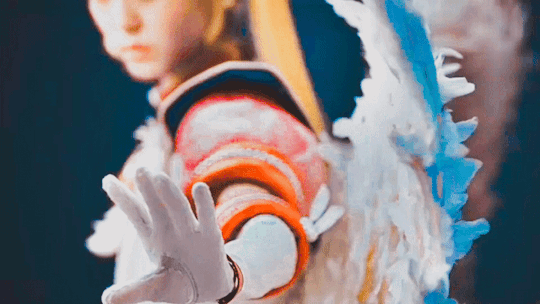

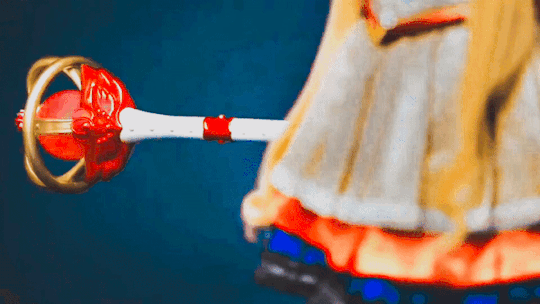

#sailor moon#bishoujo senshi sailor moon#sailor moon musical#sera myu#nelke myu#le mouvement final#usagi tsukino#tsukino usagi#hotaru nomoto#sailormoongraphics#seramyuedit#sailormoonedit#smedit#dailysailormoon#*sailormoon#*myedit#watching videos from official channel when crystal and nelke myu was airing at the same time and manga got a new edition#which was the peak of sailor moon#it is so nostalgic :')
56 notes
·
View notes
Text
~
#just purchased some new and new-ish gintama merch#including one i absolutely had to have#i'm so thrilled about this one since it's kind of rare as an event merch and not one sold regularly in stores#can't wait to share when everything arrives and i'll share a pic of my entire gintama collection#which sounds bigger than it actually is but hey it's enough for me!#i'm only a semi-collector and i wish all my faves were as regularly available as naruto and one piece merch lol#north america is still obsessed with battle shounen; that's all they ever bring into the online and offline stores now#once in awhile there will be like a sailor moon sticker or an ouran hshc pair of socks#but you gotta dig around offline and online to get merch for non-mainstream series or series no longer experiencing peak popularity#or series that just never took off in the west#sobs over donten ni warau/rengoku ni warau and how i ran out of time to visit lake biwa
3 notes
·
View notes
Text
Or you can do all of the above and watch the dubbed 4Kids version of Yu-Gi-Oh
did you guys know that when you are in bed at night time, you can turn on a lamp, put a really soft blanket around your shoulders and read your book?? and sometimes it will rain??? did you know that???? the wonders of this life do not cease!
#the 4kids dub is iconic#i forget about all of my worldly troubles while watching this lmao#it’s peak comedy and story telling#don’t ever talk to me about the DiC dub of Sailor moon though#sailor moon is scared and shall not be desecrated by that garbage#also I met the voice actor for Tuxedo Mask from the Viz dub which is so cool#and he panicked when I had him sign my sailor moon manga and he drew a tulip instead of a rose#this is also the same man that voices Mumen Rider from One Punch Man lmao
12K notes
·
View notes
Text
Mayhaps an Anime Poll?
Barring being cursed for my hubris of posting this poll with some hours left of my show, I should finish this season of Pokeani sometime tomorrow evening, which means I need y'all to choose the next in line.
If you're new here: Hello! I am Very Good at watching anime, but Very Bad at being decisive, so I throw a couple shows into a poll and it's your job, mutuals, followers, and strangers, to pick what I watch next!
Propaganda* (*yapping, sometimes coherently) below the cut. You're absolutely allowed to reblog to yap in the tags (I do read them; propagandize for your favourites, gang <3), for reach, or insert third reason here. You DO NOT have to know me, follow me, like me, or like/know/have watched any of these options to vote. We love pressing random buttons based on Vibes.
Propaganda:
Sailor Moon - The button is self-explanatory for those who know that I just watched Madoka Magica for this first time. :) This poll option will cover Sailor Moon SuperS series.
A Terrified Teacher at Ghoul School - Ngl Scooby-Doo and the Ghoul School is one of my favourites of the Scooby-Doo films. Peak cinema. The only downside for this one is it's not dubbed so it will, naturally, take me 1000 fucking years to get through it if Banana Fish was any indication. But I also saw glimpses of many fans on Reddit being quite sad that it likely isn't getting dubbed, so. Good to know there's a fandom attached. Godspeed, weebs.
KonoSuba: God's Blessing on This Wonderful World! - Tbh I haven't watched much isekai, but the description for this one sounded very fun.
Nana - Sorry about the brutal button, Nana fans. I'm ready for the emotional affair yuri though.
Welcome to Demon School, Iruma-Kun! - I went downstairs and there he was. Satan.
Kamisama Kiss - Kamisama tends to do pretty well in these polls usually. Will this be the day I fall for another J Michael Tatum-voiced romance anime character as I am wont to do?
#sailor moon#sailor moon supers#a terrified teacher at ghoul school#konosuba#konosuba: god's blessing on this wonderful world!#nana#nana anime#welcome to demon school iruma kun#kamisama kiss#anime poll#anime#poll
23 notes
·
View notes
Text

I FINALLY DREW FRIEREN AAAAAAAAAAAAAAAA I added some noise which I've been liking on other people's art!! Im still a little unsure about it tho and Im paranoid that when I print it, it might read as "bad quality print" (Frieren glazing after the zoom-ins) Edit: eww why is the zoom ins so desaturated smh


Beware, some minor spoilers are in the glazing (also pls ignore grammar/spelling w/e Im writing this in a fervour and editing is gonna harsh my vibe smh)
AAAAAAAAAA The storytelling of Frieren is so novel and well done, like Im literally sobbing everytime I think about it. I LOVE LOVE LOOOVE the way they ACTUALLY incorporated the difference within the perception of time for long-lived species (which is smth I've been complaining about for EONS when there's like "immortal demon child" characters), albeit it's less "incorporated" and more the whole goddamn focus. IDGAF. It's SO REFRESHINNGGGG!! INCOMING SPOILERS OF EP25 AND EP26 (manga ch 52-55)!!! Like when Frieren explains how Zoltraak is still relatively new to her (considering that 100 years is like nothing to her)and so using the defence spell for it still needs a little thinking time; whereas for Fern, it's natural and almost even instinctual, because Zoltraak was developed, studied, defended against and mastered by humanity all before Fern's time. It makes me think of how smartphones today are so intuitive and "natural" for the youth to grasp -- because we learned about them and "grew up" with it all our lives, as opposed to our elders, where it was developed when they were much later in life and already had so many experiences (especially formative ones) without it; so learning this LITERAL "NEW FANGLED TECHNOLOGY" is so UNINTUITIVE and DIFFERENT for them....idk I feel smth... Also from the storytelling and worldbuilding, I KNEW it was a woman author like damn if Beastars and Dunmeshi (and many other foremothers like Sailor moon, Nana and like all of CLAMP, but like, you get the point lmao) taught us anything, it was that female authors basically ALWAYS have peak lore, world and character building/design. Like, it's SO COOL that you can literally SEE the passage of time, like through Frieren's flashbacks with Flamme, the clothing and buildings all show a different time period compared to that when she was travelling with Himmel, I havent particularly noticed anything particularly different between Himmel and Fern's time, but that's 80 years compared to the LIFETIMES that was between Frierens adventures with Himmel and Flamme. Another cool point is seeing that Serie STILL wears the same style clothes she did when she was teaching Flamme during the Mage exams. Like not 2 b cringe but "It really shows that Serie is a mage from the past. She is stuck in the past and unwilling to change with the times, unlike Frieren." BC LIKE, FRIEREN CHANGED HER CLOTHES STYLES WITH THE TIMES U KNO??? AND SHE'S CONSTANTLY BEING CHALLENGED WITH HER HABITS AND BELIEFS, SO SHE'S FORCED TO BE A "Mage of the future", LIKE HOW FLAMME PREDICTED. Ok glaze over, if I have more thoughts I'll reblog or comment or smth, anyways
#my art#my rants#frieren: beyond journey's end#sousou no frieren#frieren anime#frieren fanart#frimmel
14 notes
·
View notes
Text
Shoujo Manga’s Golden Decade (Part 1)
Shoujo manga, comics for girls, played a pivotal role in shaping Japanese girls' culture, and its dynamic evolution mirrors the prevailing trends and aspirations of the era. For many, this genre peaked in the 1970s. But why?
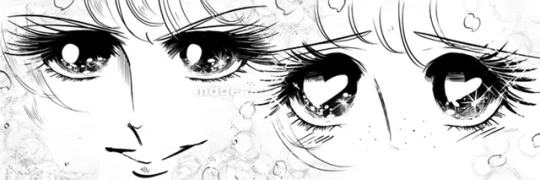
Manga stands as one of Japan's primary cultural exports, deeply ingrained in the local culture and enjoyed by individuals of all ages and genders across various genres. Conventionally, manga is divided into two editorial segments: shonen (targeted at boys) and shoujo (targeted at girls). While shonen manga, propelled by hits like "Dragon Ball," "Slam Dunk," "Naruto," and "One Piece," has achieved global popularity, girls' comics, with their own international sensations such as "Sailor Moon," hold a crucial position in the market. The evolving landscape of girls' manga serves as a fascinating lens through which to observe the shifting fashionable aspirations and beauty ideals within Japanese society.
Shoujo manga has a rich history, dating back to the early 20th century. However, it truly gained recognition in its modern form in the late '50s and early '60s when prominent Japanese publishers introduced shoujo manga anthologies such as Kodansha's Nakayoshi and Shoujo Friend, as well as Shueisha's Ribon and Margaret. The acclaimed "godfather of manga," Osamu Tezuka, is often credited with creating the first modern shoujo, "The Princess Knight," in 1954, and the first shonen, "Astro Boy," in 1952.
A distinguishing feature of shoujo manga is that it is created by and for girls. But, in the '50s, this wasn't the case, and male artists dominated the shoujo field, which was considered an entryway to the manga business. By the 1960s, that would change as publishers recognized that women creators possessed a unique proficiency in crafting narratives centered around female experiences. Female manga-kas resonated with readers in a way that many male artists couldn't, marking a crucial shift in the landscape of shoujo manga.
The Volleyball Craze
A notable display of how shoujo could mirror societal trends unfolded in the '60s. In 1964, the Tokyo Olympics marked a new beginning for post-war Japan, and the female volleyball team, known as Toyo no Majou (the Oriental Witches), achieved stardom by clinching victory in the finals against the Soviet Republic. This triumph triggered a nationwide "volleyball boom," resonating particularly within the shoujo manga realm.
Shueisha's Ribon, historically the leader in the shoujo manga field, started publication in 1955. Still, the editorial house would only begin to make its series available in standalone tankobon format almost 15 years later through the now iconic Ribon Mascot Comics imprint. The first series to be made available by the imprint was Chikako Ide's "Viva Volleyball."
Simultaneously, over at Kodansha, Shoujo Friend was also eager to capitalize on the boom. Editors commissioned a title about the sport from illustrator Akira Mochizuki and novelist Shiro Jimbo. The final project, "Sign wa V," became a multimedia success, being quickly adapted into a live-action TV drama that achieved very high ratings.
While "Viva! Volleyball" and "Sign wa V" enjoyed success in their time, they did not etch themselves into the collective memory. The true shoujo sports manga blockbuster, a cross-generational classic universally known in Japan, is Chikako Urano's "Attack No. 1," serialized from 1968 to 1970 in Weekly Margaret.

It became the first shoujo manga title to surpass ten tankobon volumes (it had a total of 12 volumes), and it was forever immortalized thanks to its 1970 anime adaptation, which achieved high ratings on Japanese TV. Everything about "Attack No. 1"—from the original manga to the cartoon adaptation to the anime's theme song, which sold over 700k copies as a single—was a success.
The story of a high school girl trying to become the best player in her school, Japan, and eventually, the world became a phenomenon, setting the stage for the '70s "golden era of shoujo."
The Shoujo Lost Years
Until the '70s, manga carried the stigma of being a guilty pleasure, often viewed as a "poison" meant to dumb down young readers. Despite a few discerning individuals recognizing the medium's potential, manga critics, enthusiasts, and tastemakers — predominantly men — largely disregarded female-centric comics. Shoujo manga, despite its immense popularity, faced the harshest criticism.
Because society and critics downplayed shoujo, influential shoujo manga-kas from the '50s and '60s, such as Hideko Mizuno, do not enjoy the same level of recognition as their shonen counterparts from that era.
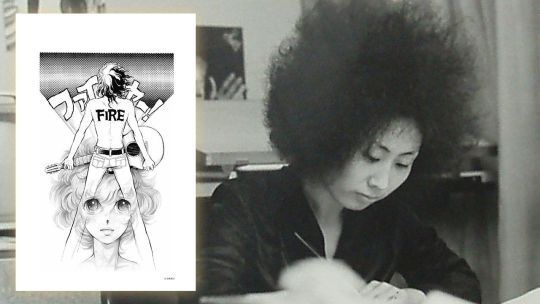
Hideko Mizuno and a page of one of her most celebrated works, "Fire."
Mizuno was one of the first women to create manga, worked as an assistant to Osamu Tezuka, and was behind several massive hits that had a significant impact on women in the '50s, '60s, and '70s. In fact, the most iconic shoujo manga-kas from the '70s golden period directly mention her as an influence. She fought to include romance -- now the essential element in girls' manga -- in her works back when such topics were deemed inappropriate by male editors.
Mizuno's repertoire was vast: she wrote mangas about little girls and their poneys, magic adventures, and romcoms based on Audrey Hepburn's movies, and she drew the first sex scene in a shoujo manga. The manga in question was "Fire," a teen-targeted manga featuring a rebellious American rocker, which broke new ground by having a male character as its focal point. Alongside other notable female artists from the '60s, Mizuno laid the groundwork for the '70s shoujo explosion, during which girls' comics took center stage.
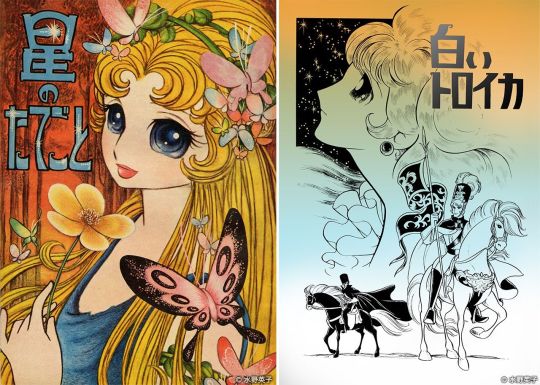
In 1960's "Hoshi no Tategoto" (left,) Hideko Mizuno created the first shoujo love story. Serialized in Weekly Margaret between 1964 and 65, "Shiroi Troika," set during the Russian Revolution, was the first historical shoujo manga.
A contributing factor to this "golden period" was the emergence of several shoujo mangas as unstoppable hits, selling millions of copies and becoming cultural phenomena. These titles, considered masterpieces, continue to be read and known by multiple generations.
The BeruBara Boom
"Attack No. 1"'s success spread far and wide, forcing Japanese society to take note of the potential of the shoujo segment. Right after this historic success, Shueisha's Weekly Margaret hit the jackpot once again with another epoch-defining manga hit, Ryoko Ikeda's "The Rose of Versailles," which debuted in 1972. Set in the years preceding and during the French Revolution, it weaved together historical figures like Marie Antoinette and fictional ones, like the iconic Lady Oscar, a handsome noblewoman raised as a boy to succeed her father as the commander of the Royal Guard at the Palace of Versailles.

The first volume of the original comic had Marie Antoinette on the cover as Margaret's editors believed she'd be the favorite character. However, the androgynous Lady Oscar turned into a fan fave and the absolute star of the series, which is reflected on the cover of most rereleases since then, including the 2013 bunko version seen above.
When talking about shoujo manga classics from the '70s that are familiar to everyone in Japan, "Rose of Versailles" is probably the first name that comes to mind. It was a hit that really defined the era and impacted the country as a whole. While Marie Antoinette is seen around the world as a tragic, out-of-touch figure, in Japan, many women and girls see her as an aspirational historical fashion icon. While Sofia Coppola's 2006 film "Marie Antoinette" solidified this among younger generations, it was Ikeda's gentle portrait that made her a character loved by so many across all age groups.
When conceptualizing the story, Ikeda was heavily inspired by Stefan Zweig's "Marie Antoinette: The Portrait of an Average Woman," which she read while in high school. Once in college, in the late '60s, she, like millions of others, was heavily involved with the Marxist student movements. These references led to a historical romance that touched on heavy and revolutionary themes, which was atypical for a shoujo manga, a segment that, back then, was primarily catered to elementary school-aged girls.
Because of its unorthodox concept, Margaret's editors were unsure about the series. But right from the start, "BeruBara" (derived from the original Japanese title, "Berusaiyu no Bara"), serialized between 1972 and 1973, was an explosive hit, quickly turning into Weekly Margaret's most popular series. It was compiled in 10 tankobon volumes published, which sold tens of millions of copies. In fact, according to some stats, it is the best-selling '70s manga across all genres in total sales.
In 1974, after the original manga had finished its serialization, Takarazuka Revue, an all-female theatrical troupe, announced a stage adaptation of the story.
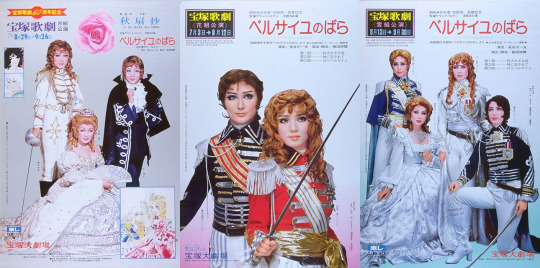
Posters of the first three Takarazuka adaptations, from between 1974 and 1975. Since then, the Revue has adapted the manga 11 times, with a new run scheduled for 2024.
The Revue was established in 1913 by the owner of Kansai's leading railway company, Hankyu, to boost tourism to the city of Takarazuka, his line's last stop. It was a huge success, and soon, the group had its own luxurious theater as well as its very exclusive academy where young ladies underwent an arduous audition process to become Takaraziennes. In 1934, a second Takarazuka theater opened in Tokyo.
However, in the early 1970s, Takarazuka faced stagnation, with declining ticket sales attributed to the growing popularity of alternative entertainment forms such as cinema and television.
In 1973, Shinji Ueda, who had risen through the Takarazuka ranks as a director, made his debut as a playwriter in the company with a musical based on ancient Japanese history. While thinking about his next project, he decided to check out a manga popular with some Takarazuka fans, "Rose of Versailles," and he quickly realized it was the perfect theme for an adaptation. Lady Oscar, who had lady-like features but was also as handsome as a man, was the embodiment of the male role-playing Takaraziennes. Ueda reached out to Ryoko Ikeda, who, as an admirer of the troupe, quickly granted the rights.
But Ikeda and Ueda's excitement wasn't shared by many. Most of the Takarazuka team were skeptical about a play inspired by something as vulgar as a manga. Fans of the original were also highly protective of its characters and entirely against a live adaptation.
Amid this climate of distrust, the play opened at the end of August 1974 at the Takarazuka Grand Theater. The reaction after the first night was extremely positive. Soon, Takarazuka's "Rose of Versailles" was the hottest ticket in all of Japan, with the press breathlessly covering the "BeruBara boom" that led thousands of people to stand hours in line to get tickets to the coveted performances in Kansai and Tokyo. Ikeda herself was shocked by the media phenomenon when she returned from an overseas trip and had hundreds of reporters awaiting her at the airport.
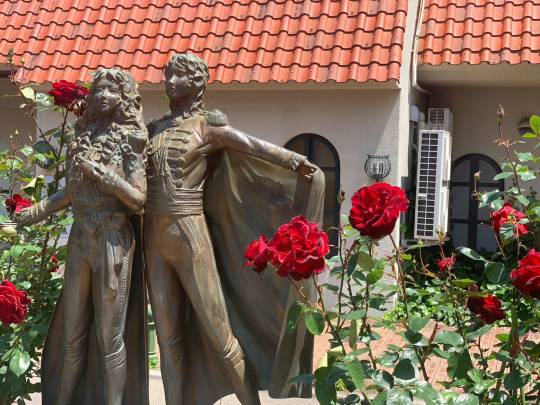
A statue of Lady Oscar and Andre surrounded by rose bushes sits outside the Takarazuka Grand Theater in Hyogo, Japan.
The "BeruBara" media sensation single-handedly reversed Takarazuka's fortunes, leading to record-shattering ticket sales for the company. The Takarazuka Academy, which had seen declining applicants, suddenly became highly sought-after again, originating the saying "Todai in the East, Takarazuka in the West," comparing it to Tokyo University, the most prestigious university in Japan. The phrase underscored the desirability and prestige associated with a position at the troupe.
Ultimately, the success of "The Rose of Versailles" propelled Takarazuka back to the pinnacle of the entertainment industry, a position it maintains to this day. The brand continues to hold great esteem among women of all ages in Japan, with Takarazuka's stage adaptations, derived from Broadway musicals, movies, novels, and shoujo manga, consistently selling out. Notably, various adaptations of "BeruBara" have collectively sold over 5 million tickets since 1974.
Following the manga and Takarazuka adaptation's explosive success, the anime debuted in 1979. While the anime received acclaim, Ikeda herself was not entirely satisfied, mainly due to the treatment of her favorite character, Andre, who played a significant role in the manga but had a minor presence in the animated version, which focused almost entirely on the manga's most popular character, Lady Oscar.

In 2013, celebrating Margaret's 50th anniversary, new special chapters of "BeruBara" were published. The first new story in 40 years resulted in Margaret magazine selling out across the country.
"BeruBara" remains a prominent franchise in Japan, spawning numerous licensed products, sequels, and spin-offs. Ryoko Ikeda, known for other successful series, continues to garner widespread respect and media attention. However, while almost everything related to "The Rose of Versailles" turned into a hit, there was an exception.
In March 1979, a few months before the anime premiere, a live-action film adaptation debuted with great fanfare. Fittingly for such a hot property, the movie was one of the most ambitious productions in Japanese cinema, with a substantial 1 billion yen budget.
The Palace of Versailles granted permission to shoot in its interior. The filming was in English, with a European cast. The project was helmed by France's hottest movie director, Jacques Demy. Demy wasn't respected only in the West but also in Japan, where his two most important films, "The Umbrellas of Cherbourg" (1964) and "The Young Girls of Rochefort (1967)," were also hits. In fact, to this day, both flicks remain popular among trend-conscious Japanese as examples of stylish oshare movies that fully capture aspirational girls' culture (alongside, among others, Sofia Coppola's "Marie Antoinette"). Demy, the mind behind dreamy, girly movies, seemed like the perfect choice to turn this blockbuster shoujo classic into a live-action film.
The movie had the backing of three gigantic domestic corporations: Toho, the leading Japanese movie distributor; Nihon Terebi (NTV), one of the main TV stations; and cosmetic giant Shiseido. NTV and Shiseido made sure the movie had one of the most extensive marketing campaigns Japan had ever witnessed. The TV station aired specials and segments on this grand production. Meanwhile, Shiseido made the star of the movie -- British actress Catriona McCall, who played Oscar -- the face of its spring campaign, promoting its new Red Rose lipstick. Catriona was plastered on billboards across the country, made media and department store appearances, and starred in luxurious TV spots.
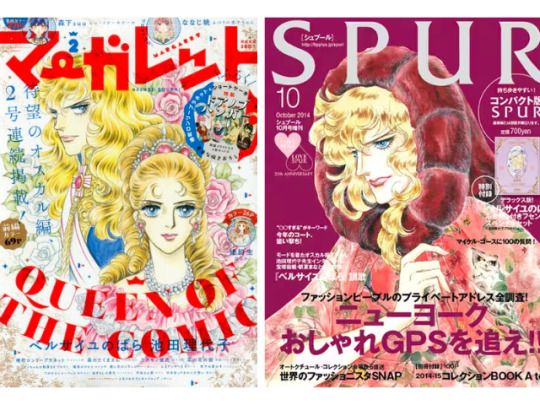
On the left, Lady Oscar and Marie Antoinette adorn the cover of Margaret in 2016, over 40 years after the end of the original serialization. On the right, Oscar models Dolce & Gabanna new collection for high-end fashion magazine Spur in 2014, celebrating 40 years of the conclusion of the original manga.
Back then, Kanebo, the second biggest local cosmetic company, was in fierce competition with Shiseido. TV ads from both companies had a tremendous impact, propelling singles to the top of the charts, and there was a battle on which commercial would feature the biggest hit. But, in the spring of 79, the focus of the fight changed. As a response to the Catriona "Rose of Versailles" campaign, Kanebo also hired a British beauty, actress Olivia Hussey, and launched a "Super Rose lipstick" with the tagline "You are more beautiful than a rose." The cosmetics war was another proof of the chokehold "The Rose of Versailles" had in the decade.
But when the movie finally premiered, it was a flop. Critics hated it, and Japanese fans thought the adaptation was weak and lacked impact. Catriona, in particular, was criticized for not conveying Oscar's androgynous charm, which perfectly balanced masculinity and femininity. With the well-received anime premiering just a few months later, the expensive movie adaptation ended up being outshone and forgotten. It became only a costly footnote in the manga's history.
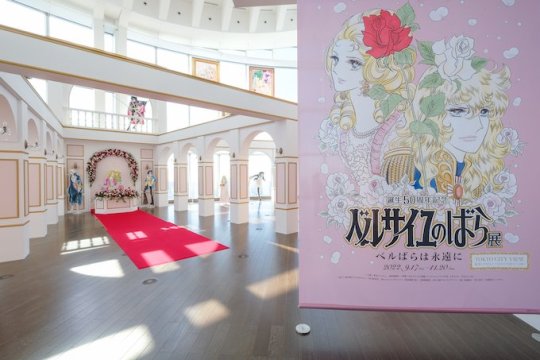
An exhibition in Tokyo celebrates 50 years of BeruBara in 2022.
(It's worth noting that Kanebo clearly won the CM war. While the Shiseido co-produced "Rose of Versaille" feature film flopped, the "You Are More Beautiful than a Rose" song Kanebo commissioned from singer Akira Fuse became a considerable hit).
Movie aside, "The Rose of Versailles" is one of Japan's most beloved comics. From its debut in 1971 to its film and anime adaptation in 1979, it remained front and center in the country's mind throughout the whole decade. Its impact was felt in different fields, from the cosmetic business to the publishing business, from live theater to TV. It also forever changed how shoujo manga was perceived and remains one of the country's most beloved properties.
Ace-Scoring Manga
The 1970s marked a turning point for shoujo manga, as it began to gain recognition beyond its traditional audience, propelled not just by critical acclaim but by commercial success. The era witnessed the emergence of several blockbusters that captured the public's imagination. Notable among them were Yoko Shoji's "Seito Shokun," a tale centered on the daily exploits of a mischievous high-schooler, and Waki Yamato's "Haikara-san ga Tooru," a love story set in the Meiji period featuring a tomboy with a lady-like demeanor. These manga were significant hits during their publication in Kodansha's Shoujo Friends, becoming best-selling titles with tens of millions of copies sold.
Some shoujo classics from the '70s are still in publication today, appealing to a diverse readership spanning multiple generations. Suzue Michi's "Glass Mask," serialized in Hana to Yume since 1976, remains a cultural phenomenon with 49 tankobon volumes, over 55 million copies sold, an anime adaptation, a live-action drama, and a stage play. Similarly, Chieko Hosokawa's "Crest of the Royal Family," chronicling the adventures of a young American girl transported to ancient Egypt, has been a consistent presence in Princess magazine since 1976, boasting 69 volumes and over 45 million copies sold to date.
But, when talking about definitive shoujo classics from the '70s, titles that were historical successes, influenced everything going forward, and are known by everyone, three titles come to mind. We already explored one of these, "The Rose of Versailles." One of the other three is "Ace wo Nerae."

Following the monumental success of "Attack No. 1," the prospects of another shoujo sports manga achieving similar heights of popularity seemed improbable. However, Weekly Margaret defied expectations once more in 1973 with the release of Suzumika Yamamoto's "Ace wo Nerae" ("Aim for the Ace"), a compelling narrative focused on tennis that swiftly captured the nation's attention.
Japan and tennis already had some prior history. The first Japanese Olympic medalist was a tennis player, Ichy Kumagae, in 1920. Emperor Akihito met his commoner wife, Michiko, at a tennis match, and they initially bonded over their love for the sport. But, in the 70s, the country was taken over by an unprecedented tennis boom. At high schools across the nation, tennis became the most popular after-school activity. Fashion magazines like JJ and Popeye dedicated pages and pages to "tennis fashion." At the same time, trendy young adults decked in clothes from sports brands populated Shibuya and other stylish districts in Tokyo.
There were several contributors to the tennis boom. But the remarkable success of "Ace wo Nerae," which first conquered girls before dominating the nation, played a part in it.
The manga follows the journey of Hiromi Oka, a high school student initially plagued by insecurities but propelled into the world of tennis through the encouragement of her coach. "Ace wo Nerae" portrays her growth from a hesitant newcomer to a world-class tennis player, navigating challenges and discovering hidden potential along the way.

From left to right: Madame Butterfly, lead character Hiromi Oka and coach Jin Murakata as depicted in the anime. Madame Butterfly, a wealthy teen girl who is gentle and a world-class tennis player, is a fan favorite character.
In 1973, "Ace wo Nerae" was adapted into an anime. Despite initial modest ratings, the anime gained popularity through reruns. Encouraged by this, NTV decided to remake the cartoon. The second adaptation, which debuted in 1978, was an immediate hit. Concurrently, Weekly Margaret revived the manga series, which, after being first finalized in 1975, ran again from 1978 to 1980, spanning a total of 18 volumes.
Since "Ace wo Nerae," several hit mangas focused on tennis -- both shoujo and shonen -- were published. But, thanks to the success of its anime and the intragenerational support for the manga, the original work by Suzumika Yamamoto is still considered one of the defining and most beloved works about the sport. Its role in propelling tennis culture as part of the oshare youth culture of the '70s also defines its impact.
Japan Wants Candy
Following the monumental multimedia success of "The Rose of Versailles" and "Ace wo Nerae," the third shoujo sensation of the '70s is "Candy Candy."
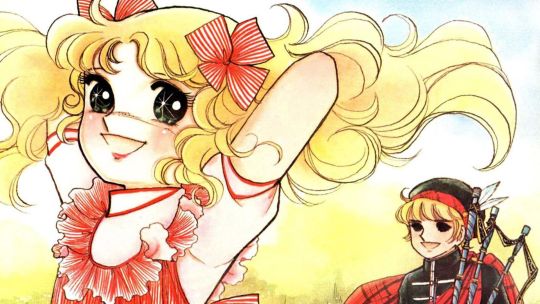
Initially published in Nakayoshi, the story started taking shape when editors at the magazine sought a work of literary excellence akin to beloved classics popular among girls, like "Heidi" and "Anne of Green Gables." They enlisted Keiko Nagita, writing under the pen name Kyoko Mizuki, and paired her with one of the magazine's most famous artists, Yumiko Igarashi. The collaborative effort resulted in the creation of "Candy Candy," centered around an American, blond, blue-eyed orphan named Candice "Candy" White Ardlay.
"Candy Candy" epitomized various shoujo directions prevalent in the '70s. The protagonist, a white girl with lustrous blonde hair, embodied the fascination with Western culture during a time when Japanese youth held a keen interest in Europe and the United States. The manga's narrative style, characterized by its dramatic tone and plot twists, also aligned with the prevalent storytelling preferences of the era.

Candy Candy was such a resounding success that it became the first manga to achieve an initial print run of over 1 million copies of one of its paperback compilations.
Debuting in 1975, "Candy Candy" swiftly captured the hearts of Nakayoshi's readers, leading to unprecedented success. The subsequent anime adaptation by Toei in the following year propelled the franchise into the realm of a cultural phenomenon, sending manga tankobon sales skyrocketing. The seventh volume of the "Candy Candy" compiled paperback reportedly became the first Japanese manga to achieve an initial print run of over 1 million copies. Additionally, Nakayoshi's sales surged, surpassing those of its historical rival, Shueisha's Ribon, for the first (and only) time.
The adventures of young Candy were also licensing gold. With over 100 licensed products, the "Candy Candy" doll alone sold 2 million units, solidifying Bandai's position as Japan's premier toymaker, a status it continues to uphold to this day. The resounding success of "Candy Candy" forged a lasting alliance between Kodansha's Nakayoshi, Toei Animation, and toymaker Bandai, which led to the iconic "Sailor Moon" franchise in the 1990s.
While "Candy Candy" concluded its run in 1979, its appeal extended far beyond its original target demographic of very young girls, captivating kids, teenagers, and adults alike, thus contributing significantly to the manga and anime's widespread acclaim and enduring popularity.
However, a protracted legal dispute between Igarashi and Nagita has prevented the commercialization of any "Candy Candy" related products since the late 1990s, including reprints of the manga and re-broadcasting of the anime. The lawsuit arose from Igarashi's unauthorized licensing of merchandise based on the franchise, falsely asserting sole ownership of the copyright. Although Igarashi was initially credited as the lead artist in Nakayoshi during the manga's publication, the court ultimately ruled in Nagita's favor, emphasizing that Igarashi's artistic foundation was built upon Nagita's written work.

A collection of "Candy Candy" freebies offered by Nakayoshi magazine in the '70s. During the publication of the series, Nakayoshi would eclipse Ribon's sales for the one and only time in its history, (image credit)
Consequently, any commercial exploitation of Yumiko Igarashi's "Candy Candy" artwork necessitates the approval of both Igarashi and Nagita, a challenging prospect given the existing feud. Nagita, on the other hand, can profit from "Candy Candy" as long as she doesn't include any illustrations, which allowed her to release a book sequel in 2010. However, due to the dispute, one of the most beloved works in Japanese manga history is currently out of print. The lawsuit also blocks the anime from being aired or distributed. But, despite the almost two-decades-long media ban, "Candy Candy" remains widely known and beloved across Japan, a testament to its staying power.
While smash hits like "Candy Candy," "Ace wo Nerae," "Rose of Versailles," "Seito Shokun," "Hikara-san ga Tooru," and "Glass Mask," among others were key pieces into shoujo finally earning the respect it deserved, the rise of a revolutionary group of artists during the '70s was another critical element in shoujo's rise: the Year of 24 Group.
Part 2
#1970s japan#1970s#vintage shoujo#shoujo manga#lady oscar#rose of versailles#ace wo nerae#candy candy
126 notes
·
View notes
Text
yes my love to youuuuu, rafayel x reader
c/w: my ignoring the songs meaning and just sticking to the cute parts!1!! might do a fic with th actual meaning tbh... everythings lower case, nothing is beta read, probably ooc, i havent writtn in two years

"stay with me, please- just for one second more." to say he was embarrassed was an understatement. he was quite literally begging you not to stay, he was still groggy from the deep sleep he fell into. unfortunately, his dreams were plagued by sadness, he kept on dreaming about you leaving him. he didnt want you leaving him, hed give you his soul if it meant that you'd stick by his side.
it was night, the moonlights embrace peaking softly through the curtains, bathing him in the tranquil light. tranquil was the night, but his heart contradicted it, beating quickly with fright. his body felt warm, sweat dripping down his forehead- anxiety overtaking him after he was awoken from that dreadful slumber.
however, it was thanks to the moons light that he saw you- your features seemed to glow. making you look ethereal as-you looked at him with worried eyes. you slowly brought your hand to his cheek, where he quickly nuzzled against it out of pure instinct, "don't worry raf, im here. i wont leave you." those purple eyes of his which seemed to be carefully painted by the gods, were full of worry- worry that slowly extinguished.
something seemed to snap back into place now that he realized you were there, he straightened up. "well of course you wont, this fishy is much to good to leave behind." he let out a hmph as he crossed his arms- his chin being held high and eyes closing.
you immediately deadpanned, "of course not, although this.. fishy, might be unbearable, bratty, and a lot of other things, the pros outweight the cons." you rested your head on your hand as you saw him whip his head to you.
his mouth hung open, "you say the pros outweigh the cons, but you only mentioned the cons. i cant believe this." he ploppd back on the sofa, sinking into to emphasize how 'upset' he was.
you chuckled, "mhm, well all i can say is that i wont be leaving you anytime soon, youve seen too many sides of me- you know too much." you teased as you eyed him shamelessly, he did purposefully choose the lower v cut shirt to wear.
"insulting me, staring at me shamelessly, i cannot spend another second here- who knows what you might do to me." hes so dramatic, you thought. but you enjoyed it.
you traced shapes on his cheeks as you sat next to him, and as though it were muscle memory- he melted into your hand. all his previous qualms now dissipated. his pout was evident, however. you chuckled before giving him a peck on his cheek.
although his fear of you leaving him would sometimes prevail, and the end of the day it would leave. because at the end of the day, he still had you.
he could still see your smile, your eyes, he had you.
and he would do anything to make sure it stayed like that, because you had his heart. like how a sailor effortlessly catches fish, you effortlessly caught his attention- and he wouldnt have it any other way.

dividers by @/bloodibambiidoll
a/n: could you guys tell this story started pissing me off halfway through? hes extremely ooc but yk its 10pm and i have school tomorrow so i wont redo it. 😾
#lads fluff#lads x you#lnds x reader#love and deepspace x reader#love and deepspace#rafayel#love and deepspace rafayel#rafayel love and deepspace#lads rafayel#lnds#lads#fluff#romance#fanfic#fanfiction#evadnesworld
42 notes
·
View notes
Text

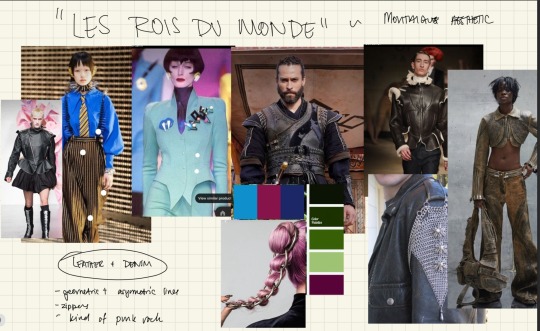
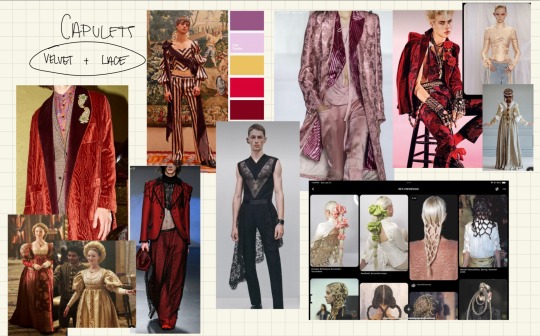

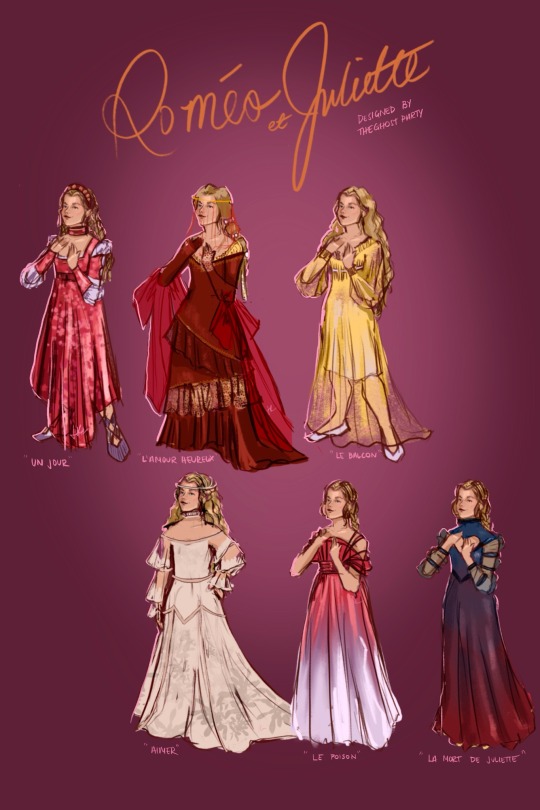
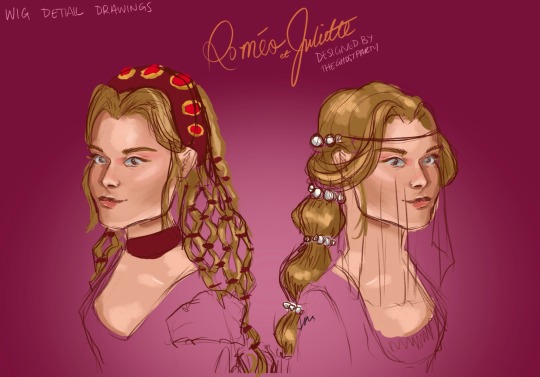
Roméo et Juliette: de la Haine à l'Amour - Redesign - 2024
To understand my completely unnecessary desire to redesign a musical that is over twenty years old, you have to understand that Romeo et Juliette is my Roman Empire. Long explanation under the break.
I wanted this design to be an homage in the silliest way possible.
I really leant into the sensibilities of original costume designer Dominique Borg, who used contemporary colour and technique and applied it to historical (or pseudo-historical) silhouettes.
Broadly, I wanted the Montagues to feel English in their shapes--Elizabethan doublets, high necklines, and ruffs, in homage to Shakespeare and the source text. They're all leather, denim, silver hardware--a little bit punk with status.
The Capulets would be deeply Italian Renaissance in their silhouettes, in reference to the setting of the play. They're all velvets, lace, chiffon, satins, and gold hardware--giving them an airiness of the Mediterranean while still allowing some drape here and there.
I wanted each family to have a slightly more broad palette than most versions afford them--which is why the Montagues have a smattering of green and magenta while the Capulets play with some soft yellows and lavenders.
The ball scene is largely Arthurian in inspiration--just because I took the idea of "what would the 1500s consider vintage and costume-y in the same way we think of the Victorian era" and ran away with it. There's also some silly Y2K nonsense because I rewatched the "On dit dans la rue" music video and thought "What if the Capulets threw this big Arthurian affair with full elegance and the Montagues cobbled together some gay club outfits circa 1998 fits out of a suit of armour."
FINALLY, I wanted Roméo and Juliette to take on elements of each other's family's style and colours for the end of the play--because to be loved is to be changed.
So here is a breakdown of my choices for each of the looks.
Un Jour: Here we see Roméo in his base look. It's a two-tone patent leather double with multiple zipper details. The peplum is criss-crossed zippers. The wings over the shoulder seams are edged with zipper teeth. The ruff detail at the neckline is also edged with zipper teeth. He has along zipper across the front of his boot like he's trying to be the next Sailor Moon. I don't know y'all. I went a little feral with trying to figure out all the places I could put zippers in.
Juliette is the most juvenile looking in Un Jour. I imagine that in this scene, she's being dressed by her family instead of her own volition.
She's in an asymmetrical, empire-waisted gown that is likely a brocaded or printed silk. Her chemise is a sheer lavender georgette or chiffon that peaks through the lacing at the shoulders and along the upper arms. She has a velvet choker and velvet belt and a heavily stoned velvet headband. Her hairstyling (it would have to be a wig, it would be NUTS to not make this a wig) is an homage to the open-weave Juliet caps that were similar to nets worn in the period on hair. Italy was, fun fact, one of the few countries where women didn't cover their hair during the renaissance.
L'amour heureux: As I explained above, Roméo's outfit is so silly. The wrap around glasses. The one arm of armour. The sheer, stoned period shirt. The gold brocade on the trousers. The pearl earring. The many, unnecessary belts. Bless this mess. It's also a cheeky little nod to Baz Lurhmann's Romeo + Juliet.
Juliette is, ostensibly, cosplaying as Guinevere or Lady Macbeth or Ophelia or any number of Middle Ages women. The ball is the Capulet's opportunity to really sell their daughter as marriage material so I wanted the look to feel bridal, hence the veil. I wanted to give reference to exaggerated surcote sleeves without actually doing them, hence the sleeve-into-glove and bow detailing with trails down to the floor. There is also a hint of yellow chemise underneath, which is actually just her Le balcon look underdressed for ease of the quick change (yes, I did think about this.) The dress is velvet with one panel of lace in-set into the underskirt. The bows are satin-face organza.
Le balcon: Romeo would change into his base again (during Le Poète). Juliette is in a simple yet totally impractical sheer chemise + slip combo. I wanted this soft yellow for this sequence because I always think about the lines "O she doth teach the torches to burn bright!" and "But soft! What light through yonder window breaks?/It is the east and Juliet is the sun" when it comes to describing her. The chemise would likely be a chiffon, while the slip would be silk.
Aimer: I say this with my whole chest--I hate how they changed the palette for Aimer in the 2010 production. I want my lovers soft and angelic and matching in this moment of union. Here we see a bit more of Romeo's lace shirt--his sleeves are laced like Juliette's in the first look. His doublet, trouser, boot combo are off-white leather in homage to the original production. Juliette's dress has a similar train length to her ball look (again, bridal) and we see the neckline creep up into a ruff (Elizabethan, rather than Italian). Lots of sheer net and lace with cream bridal satin as a skirt. Tiered sleeves. A little circlet on her head.
Le poison: Honestly? Just wanted her to have another outfit change before her death dress as a transitional choice. There's so much more of the purple in this look because it's going to take us into the blue elements of the final dress.
La mort de Roméo/Juliette: Again. To be loved is to be changed. Juliette has a dropped waistline, a high neckline and ruff, and a heart shaped cut-out detail (see: boob window). She's straight up in blue, and all the sweet and soft pinks of her youth are gone. Romeo has lost his high neckline, ruff, wins, and peplum in favour of a shorter Italian silhouette. He's asymmetrical (a call-back to Juliette's asymmetry) and all the edging detail is done in red. Mantua as a setting is patchworked, torn, and dirty, so I imagine the doublet is pieced together from scraps of jersey (so it's drippy and sad and hangs off him in a lovely manner).
#romeo et juliette#damien sargue#cecilia cara#joyce draws#retj redesign 2024#retj#this is the most unhinged thing I have ever dreamed up#anyways more to come soon#will probably do mercutio and the prince and benvolio and tybalt together as one post#did little 14 year old joyce think this is what she would STILL be talking about? nO#also if you've ever wondered what my costume design process looks like it's this
55 notes
·
View notes
Text
Azabu Juban Hikawa Shrine
Depending on which version of the anime you watch, the Hikawa Shrine is based off a different one and in different sections of Tokyo.
Below is the version featured in Sailor Moon Crystal.
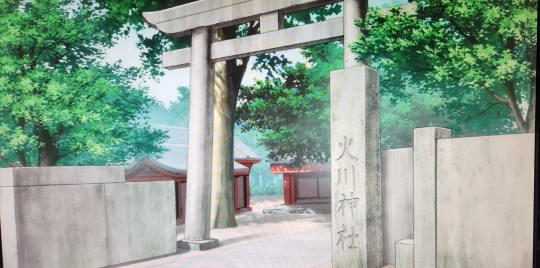
The Hiwaka Shrine in Azabu Juban taken on December 3, 2022. Lots of leaves still on the trees but past peak season. The entrance way is a little different from the Crystal series.

Close up of the stone with the shrine name.

These stairs do not exist at the real life shrine location. I feel like these were added as a nod to the 90s version of Rei's shrine. Also the bus stop is at the end of the block and across the street.

Choozuya in use.

Choozuya were not in use in December 2022 due to COVID.

Choozuya are traditionally used to wash your left hand, right hand, mouth, and then the water ladle. This is used to purify oneself before worship.

Ema used for prayers. A person writes a prayer on the back of it and the priestesses will pray throughout the year for them. They are removed at the start of the new year and burned in a ritual.

Found the Sailor Moon ones! Unfortunately the Sailor Moon ema were not sold at the shrine.

Below is a link for the one I did purchase from the miko.
Mini Inari shrine to worship the goddess Inari associated with prosperity, rice, agriculture, industry, craftsmanship, smiths, agriculture, and tea.
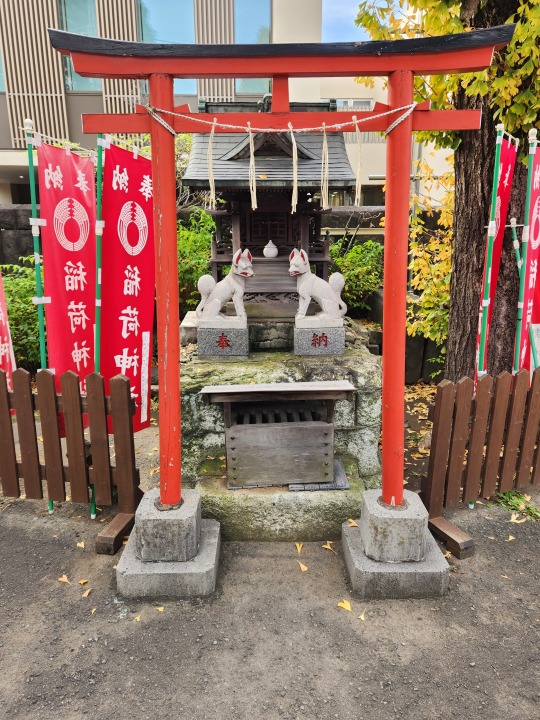
Crystal version with the main shrine building the background.

Forgot about this scene!

Some more Galaxia

We met a really sweet lady at the shrine and offered to take our picture. She was also practicing her English with us. We were told today was a lucky day and it meant big money.
Maybe the big money was related to all the money spent at the Sailor Moon Museum in the morning? 😂😂

Full view of the shrine. It is smaller than I thought it would be.

The building to side is where I bought a charm from the miko. I didn't want to take a picture when I was there since she was standing right there.

Side view of a building, I believe is used for storage.

Next time I should try to stand in this exact spot.
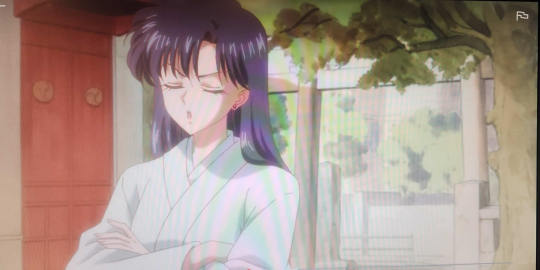
Definitely need to stand there next time.

Building where the mikoshi is stored when not in use for festivals.

Picture of the mikoshi at the shrine that houses the deity of the shrine.

Notice asking for donations to help restore the shrine.
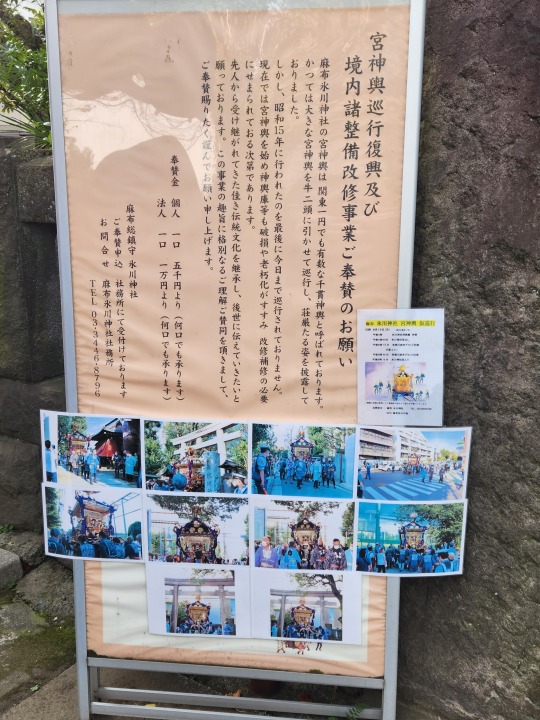
Close up of pictures.

#sailor moon#bishoujo senshi sailor moon#bssm#real juuban#real life sailor moon#azabu juban#japan#japan 2022#japan trip#japan travel#japan photos#rei hino#hikawa shrine#sailor mars#sailor moon crystal
26 notes
·
View notes
Note
Hello, greetings from CQ again! Thank you again for meeting the North Stars so positively, I can't express how ecstatic it made me to see how receptive one could be. This time around, I come bearing one of the aforementioned minor, (but still just as important), members! (Featuring a small sneak peak at the leader's Devil Fruit-) I hope you'll allow me to introduce.... …˚.⋆ ⋆₊⁺⋆���⋆₊⁺⋆ ☾ ℕ𝕒𝕟𝕒 ℍ𝕒𝕟𝕠𝕟, 𝕥𝕙𝕖 𝕊𝕚𝕝𝕖𝕟𝕥 𝕊𝕚𝕣𝕖𝕟 ☾ ⋆⁺₊⋆ ☾⋆⁺₊⋆ ⋆.˚…
"Silence speaks a thousand words."
For the deaf-born Nana Hanon, no words rang more true. But having been born a siren, his inability to vocalize left him as significant as a bubble in the waves that were his namesake. That special breed of merfolk blessed with the gift of spellbinding song, had been slaughtered to near extinction for the perceived threat they posed to sailors, and other merfolk didn't take kindly to their mere existence besmirching their already tainted reputation in the eyes of the World Nobles. Thus, to his vindictive family, spiteful towards the world for the hand they were dealt, a siren without a song was of no more worth than chum.
They were quick to cast away the Moon Jellyfish merman, and he had resigned himself to drifting through the seas. In his travels, he taught himself to navigate the world's vast waters, to communicate by means of the written, and to read the scripted words of others. He found solace in them—fantastical tales by imaginative authors birthing entire universes bound to a spine, scripts belonging to playwrights of the past bringing life to false identities, and profound lines from passionate poets who invited readers to enter their mind. He discovered a particular fondness for the last of which, and often he would find himself expressing his thoughts and feelings to only the paper that would lend its ear.
But even paper couldn't perceive the silent echoes of his desperate cries for help.
A merman was a merman, deaf or not, siren or otherwise, so when Hanon had the misfortune of drawing too close to Sabaody Archipelago and being spotted, it came as no surprise that someone would take advantage of valuable property that couldn't even protest being sold. And sold, he was, to the highest bidder. He couldn't even hear what his worth was to his buyer.
Carted out in a fish bowl far too small to comfortably contain his bell, he let his tears fade into the water he was submerged in. In his sorrow, however, he almost didn't notice the way his new owner's body seemed to move against its will. How his owner was outwardly resisting a dance they were being forced to partake in. How his owner was removing the lid on his bowl and freeing him from his chains before prancing off, defiant as ever. How now, in their place, stood a woman, returning to him his previously discarded notebook and pen and lending him an ear for his unspoken words to fall on.
Where song failed to allure, Hanon's heartfelt prose succeeded. The woman, entranced by every word he put to paper as he regaled her with his personal story and the overwhelming sentiment in every stanza he scribbled, offered to him a place beside her, in his own sea to call home—a sea of stars to swim in and shine along with.
So came to be the Silent Siren, assistant songwriter and navigator of the North Stars. Though he'd be taking a backseat to let the idols sparkle even brighter on their stage of midnight, he was content to glow with borrowed light and finally let his soundless voice be heard once and for all. Likewise, they were grateful to have a moon to guide their way.
After all, what are the stars without a moon to share the night sky with?
----- I know I didn't give much insight on his personality, but I was thinking he might get along with your character, at least from what I know of her, if that's not too presumptuous. ^^; I might be dropping in again with another member soon! Might be a little while so I won't be spamming or flooding your inbox too much, aha- Much love as always, dear! ♡♡♡
THE WAY I AM IN LOVE WITH NANA HANON. AAAAAAAAAAAAA.

Oh my gosh, a silent siren merman? AAAAAAAAAAAAA
Tobiuo would love to meet him. Her canon sister, Masami, is a mermaid based on an angler fish who calls sailors to their doom in the Deep Blue. She would also love to meet him. Does he sign? If so, he would be welcomed in their homesea with open arms.
Your poetry has had me enchanted by him, and I am just mourning on his behalf. He is so beautiful, I can see him in my head and I'm in love. I want to draw him 😭
13 notes
·
View notes
Text
fic author self-rec
When you get this, reply with your favorite five fics that you've written, then pass on to at least five other writers.
Thank you for tagging me, @sassybluee and @wrecklwj, and thus forcing me to let myself be perceived, lol.
1. Keep Me (MDZS, wlw Wangxian, E)
My pride and joy, tbh. My first ever Wangxian, my first ever NaNo win, something I never thought I could accomplish. It falls into one of my favorite tropes in this fandom which is straight boy/girl/whatever wei ying, which is just always such a joy. I really poured myself into his and I feel like I'll never be able to top this one. But also, Lan-er-jiejie made me lose my mind and write 50k of [confused horny noises] so.
2. Like a Knife to the Heart (MDZS, Wangxian, E)
Plot? I don't know her, normally. But I tried my hand at such a thing for last year's Bottomji Big Bang and it was such a fun experience. It was also unexpectedly fun to really lean into the unapologetic romance of historical settings for once and then mix my Wuxia love into it.
3. you bring it out of me (MDZS, wlw Wangxian, E)
Somehow, every Wangxian fic I write is some kind of new experiment for me. This one, written for a Subji event, had me writing the probably niche-iest thing I've ever written, wlw subji with jealousy and exes to lovers and a flavor of bdsm I wouldn't even know how to categorize?? But this was really peak freedom, peak "I do what I want!" to write and I'm so happy with how it turned out.
4. trostlos (SNK, JeanMarco, T)
I wrote this for one of the many JeanMarco Gift Exchanges I was a part of and I think it's my favorite bit of worldbuilding I've done. It's not a very long fic and by now I wonder how I managed to squeeze so much post-apocalypitic angst into 8k, but it's a powerful one, I think. I'm still really proud of it.
5. Only You Build Me, Only You Break Me (VLD, Shallura, E)
I may no longer fuck with this show or fandom, but I do still love some of the nsfw propmt fills I did here, especially the Superhero AU and the Sailor Moon AU. Just looking at it now makes me want to do something similar again for more current obsessions.
I now curse @flecksofpoppy @materassassino @avoidingavoidance @reservoirmonks and @ilip13 with having to expose themselves like this <3
#rie writes#it seems like a mistake to not include any cr fics but it turns out those fics are not among my favorite or the ones that feel important?#honorable mention: fjorester fic steady#okay now i feel better
13 notes
·
View notes
Text
Well, I'm in my peak of Headrush fixation, so. . . Yeah, first two references of characters from it, the main ones, of course - Bob and Baby Diva 💥
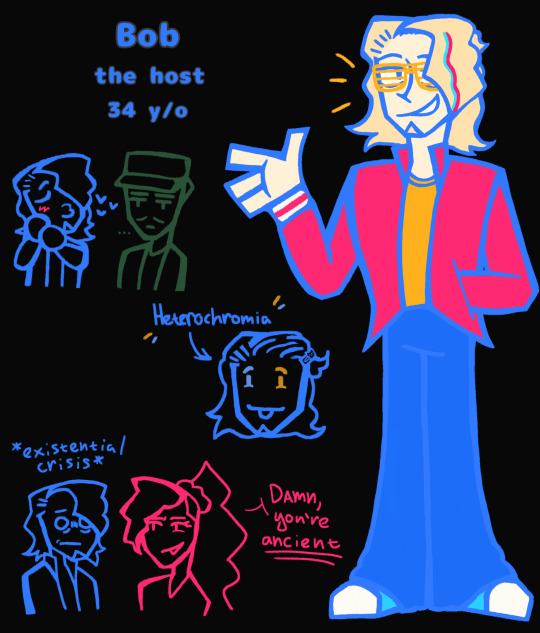
Below are headcanons for the two of them (and also a silly meme ig) woooo:
• They're cousins! Not too close, but know each other pretty well. Bob used to babysit Diva quite a lot before he moved to other state.
• They are almost the exact same height (Baby Diva is a few centimeters taller than Bob. She teases him about it sometimes)
• Share a lot of jewelry and accessories with each other. (bracelets, hair pins, glasses - all that stuff)
• Baby Diva made herself and Bob named/friendship bracelets back when she was very little. She still wears hers sometimes. (Bob too, he just doesn't wear much jewelry outside of home,,)
• Watched and rewatched Sailor Moon lots of times together. (Bob forced Baby Diva to 💥)
• Both are very talented musically - Diva is a great singer and Bob plays drums in his band.
• Baby Diva doesn't have license and Bob has to pick her up sometimes, which is pretty embarrassing to her,,
Aaaand that's it. For now. 💥
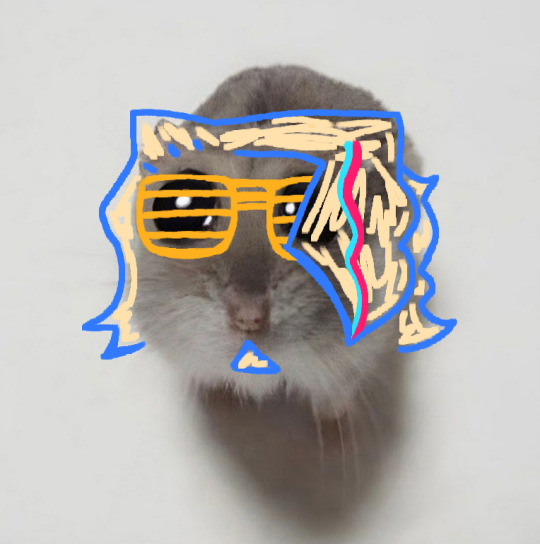
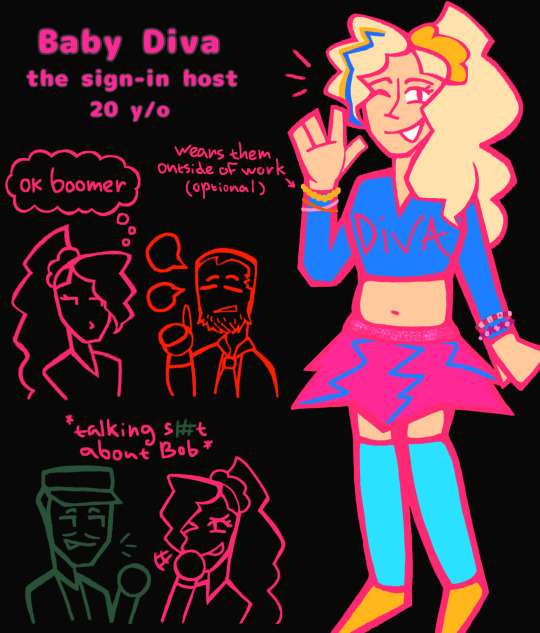
#guys. guys im just so normal about headrush i swear.#ydkj#jackbox#you don't know jack#bob headrush#baby diva#ydkj fanart#ydkj headrush
23 notes
·
View notes
Note
💯📆💌
for the artist asks (((:
From the artist/fanartist ask game
You sent me the best questions and I definitely wrote too much, sorry not-sorry :)
💯Favourite piece(s)
Oooh this one is nice!
I'm really satisfied with almost everything on my anatomy blog, I consider it a personal peak in my artistic skills. Down here probably my favorite piece among them, but there are a lot that I like :)
If I had to show someone in real life what I draw (which I don't), I would definitely choose this portrait of Clive from Final Fantasy 16. For those who have followed me for long, I very rarely use colors, and only recently started experimenting with digital watercolors, and this was the last one of a series I made and I'm super happy of it.
Last but not least, the very first quick sketch I made of my Rook. It's rough, quick&dirty as they say, but it has a soul, and it's so her. I love it <3
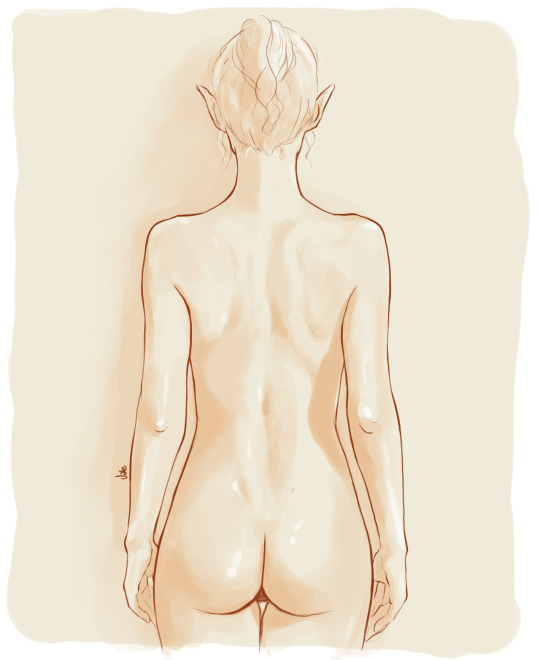


📆Earliest fandom you did fanart for/first fanart
Technically Sailor Moon, I used to draw tooooons of drawings of that in elementary school, and my schoolmates used to ask me to draw some for them too. My friend and I videotaped all the episodes, then put it on pause and draw whatever “screenshot” we liked. It’s wild to think about it now XD
First fanarts I shared on the internet though are from Final Fantasy VIII. I had a fanmade website (the very first italian website for FF8, I'm still very proud of that :D) with a dedicated section to fanarts and fanfictions and I shared mine there. Wtf guys, what a jump in the past you made me do… ❤️
Little trivia no one asked for: my username actually comes from there. The website was called “Elly’s FF Italia”, from the character Ellone (Ellione in Italian, “Elly-na” is a diminutive we use for little/cute names) and guys we’re talking about 1999 here omg I was so young AND I KEPT THE USERNAME ALL THIS TIME I'm actually kind of amazed myself <3
💌Some favourite feedback on art
There are two type of feedback in my experience: actual comments, more or less elaborated, and then tumblr tags.
I did receive some very thorough comment lately on a FF16 discord, saying wonderful things about how my art made them feel and tons of truly other amazing things, noticing details and so on. And it's flattering, and it's motivating. Wow.
But guys, what people can write on tumblr tags IS. JUST. THE. BEST. I don't know what happens, it's all written on instinct in those five seconds it takes you to reblog something, and we know people can read it but clearly we don't give it much thought because it's unhinged. Have you seen some of the tags under cowboy!Davrin? :)
#RAAAAAAAAAAAHHHHHHHHHHHHHHHHHH #👀 #I think i hauve the blight #omggggggggg #🥵 #i’m looking so respectfully #insert that fire-fueled elmo gif here #yeeeeees! #YESSSSSSSS #PLEAAAASEEEE #meoooow #SIR PLEASE IM WEAK #OH MY GODDDDDDDDDD #👉👈 #STUNNING #hell fucking yeah thats so cool #i am out of breath #OOOOUUUUUHHHHH #*feral noises* #yee? #and also possibly haw #a noise escaped me #and idk how to describe it #this is INCREDIBLE #omg i love ittttttt #SWEATING #I AM SCREECHING #this is so good???? #YIPPEEEEEEEEEEEEEEEEEEEEEEEEEEEEEEEEE
This. This is my favorite type of feedback :D
4 notes
·
View notes
Text
Anotha One (Anime Poll)
Twitch is acting up (giving me ads on a channel I'm subscribed to (if anyone's found a working Twitch adblocker for Firefox lemme know)), so I'll spend my evening finishing up Zombie Land Saga Revenge (I'm on Revenge now), and you'll spend yours telling me what anime to watch next (pinned post).
If you're new here, I give the internet free reign to decide what anime I watch.
As always, propaganda* (*I will yap) below the poll. You can reblog to rally your followers or yap about anime in the tags (I do, in fact, read them). You do not have to know me, follow me, like me, or like/know the shows in the poll to vote.
Propaganda:
Sailor Moon - If the world reset, shouldn't I have my cunty evil men back? I'm just sayin... This poll option will count for Season 2 of Sailor Moon: Sailor Moon R.
Free! - If it gets voted, cool. If not, it'll keep showing up with different 50% Off! quotes. I am nowhere near running out of 50% Off! quotes so up to you.
Fairy Tail - Ahem.

I made it. I'm getting mileage off it. 24 Hour Road Race, my beloved. Also, Edolas arc (my beloved), but I'm counting this first because I love 24 Hour Road Race so much. This poll option will count for Season 3 (eps 73-100) of Fairy Tail.
Castlevania - I do not have nearly as many Brian David Gilbert "I wasted 3 weeks of my life finding Castlevania's hottest monster" quotes as I do 50% Off! quotes, but I am putting them to use.
Given - The button is not a lie, that was a Google suggested search I got with exactly that wording. Uh, anyway, I know they are a band and gay. I do not need more information.
Nichijou - My Ordinary Life - Came pretty close in the last poll, so I'm sure it will do well in this one. From the gifs I've seen the animation in this show is on another level and so I am excited.
#sailor moon#sailor moon r#free! iwatobi swim club#castlevania#given#given anime#nichijou#nichijou my ordinary life#my ordinary life#fairy tail#anime#anime poll
22 notes
·
View notes
Text
The Black Moon Saga
It really do be like:

The Black Moon Saga is peak Sailor Moon, no matter the medium.
The original manga and Crystal's are virtually identical, and the quality of Naoka Takeuchi's writing compared to the Dark Kingdom arc is such an upgrade it's not even funny. Not only is the plot more compelling, the heroes more developed, and the villains more interesting, but my most major complaint from how the final third of the previous arc went down is fixed: Usagi's feelings toward Mamoru becoming obsessive and unhealthy while the narrative doesn't acknowledge it. This time, it's a huge point of the narrative: Usagi and Mamoru may be pre-destined True Love, but that doesn't mean they are True Love so long as Usagi puts all her self-worth on being validated by Mamoru and is threatened by Mamoru attaching himself to anything else, even their own future daughter. So Usagi must learn to have self-love and belief in herself, as that's the only way she can truly love and believe in Mamoru the way he does for her. When she ends up facing Black Lady who boasts of Mamoru belonging to her and her alone, the fact that she is essentially facing her past self is directly pointed out.
The 90s anime diverges more heavily from the source material than the previous Dark Kingdom arc did, which sets a precedent that lasts the remainder of the 90s anime's whole run that gets increasingly bad. However, in this case, it still manages to work equally well to its manga counterpart. Yes, there are some weak points (Chibiusa's character exaggeration, the mind-bogglingly stupid Usagi/Mamoru break-up plot, the infamous dinosaur filler episode where the Sailor Senshi battle a volcano, a totally wasted set of episodes with Esmeraude operating on Earth, and an unconvincing last-minute redemption for Prince Demande), but not only are the strongest points from the manga arc still retained but there are even some improvements (the Four Spectre Sisters being fleshed out as characters, Rubeus being axed off first instead of Esmeraude, Sailor Mars, Mercury and Jupiter staying around instead of being locked in a dungeon for half the arc, Chibiusa's character development and resolution being more sensible, and the final battle occuring in the present day rather than the future).
And in every version of the arc, the Black Moon Clan are such excellent villains. Their position as a cult selling out their humanity to overthrow a system based purely on petty personal grievances while manipulated by a monster who doesn't actually give a crap about them and sees them only as pawns to help him satiate his lust for power is more relevant today than it was back then. They're dark and terrifying, but also pathetic and tragic. While I like all of the Sailor Moon villain groups, this one was never topped. It was the perfect foe.

11 notes
·
View notes
Text

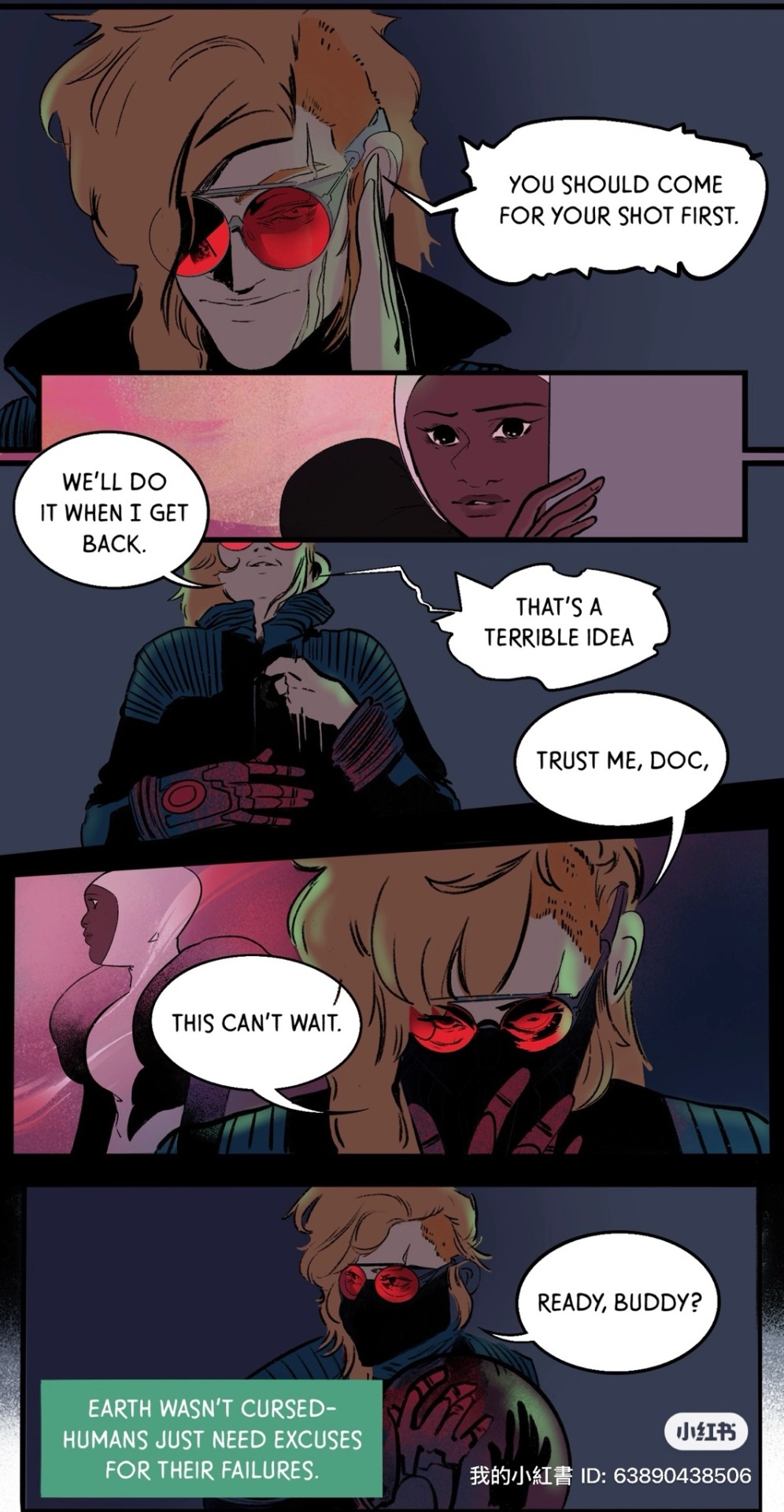
My webcomic started its SECOND SEASON 😱🤯 which is very cool and very scary.
It’s a slow burn space story, with cults and distorted space and future lesbian kisses. I’m inspired by Berserk and America and Sailor Moon and Twin Peaks and Love. Not that I think I’m on any of those levels.
Should you like to read it, give it a shot here:
#webcomic#webcomics#comics#indie comics#illustration#the pirate nun#scifi#sapphic comic#its a love story I swear
5 notes
·
View notes